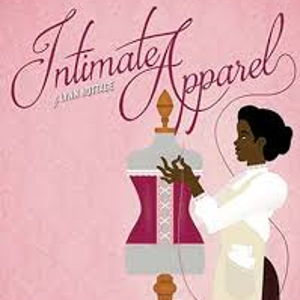
Explore this Show
Overview
Synopsis
New York circa 1905 is a time and place where rigid social divides along the lines of race, religion, and class exist alongside a burgeoning population of immigrants from abroad and people from all over the U.S., who have moved to the city to seek their fortunes, bringing diversity, excitement, and change. Esther Mills, a skilled African-American seamstress, is able to navigate this changing, dangerous world with her needle and thread, as her talents are much in demand: she sews the finest and most decadent intimate apparel for customers who span the spectrum of social class, from refined Fifth Avenue wives to prostitutes in the racy Tenderloin district. A virtuous, hard-working woman, with a dream of saving enough money to open her own beauty parlor, Esther has kept her nose to the grindstone for eighteen years, but ends up feeling as if life is passing her by. Romance beckons in the form of George Armstrong, a stranger who writes to her from his work on the Panama Canal, and Esther finds herself falling for his poetic words, even though her friends warn her against his sweet talk, and even though she herself is unable to read or write, and must ask for help to compose her own letters in reply. After George arrives in New York City, and after they are married, Esther discovers that she is not the only one who misrepresented herself during their correspondence courtship, and that she is now in danger of heartbreak. Warm, intelligent, and deeply human, Lynn Nottage’s Intimate Apparel explores the desire for both independence and connection, the insidious effects of racism and classism, the social oppression of women, and the bravery, hard work, friendship, and love, of people who have been forgotten by history.
Show Information
- Book
- Lynn Nottage
- Category
- Play
- Age Guidance
- Youth (Y)/General Audiences (G)
- Number of Acts
- 2
- First Produced
- 2003
- Genres
- Drama
- Settings
- Period, Multiple Settings
- Time & Place
- 1905, new york city, lower manhattan
- Cast Size
- small
- Licensor
- Dramatists Play Service
- Ideal For
- College/University, Community Theatre, Diverse Cast, Professional Theatre, Regional Theatre, Small Cast, Star Vehicle Female, Mostly Female Cast, Includes Adult, Mature Adult Characters
Context
Intimate Apparel, by Lynn Nottage, received its premiere at the Center Stage in Baltimore, Maryland, on February 21, 2003. Directed by Kate Whoriskey, the production starred Shane Williams as Esther and ran for just over a month. A co-commission with South Coast Repertory in Costa Mesa, California, the production transferred to that theatre, with the same director and cast, and received a month’s run starting on April 11, 2003. An Off-Broadway production, directed by Daniel J. Sullivan and
to read the context for Intimate Apparel and to unlock other amazing theatre resources!Plot
Act One
In a boarding house bedroom in Lower Manhattan, seamstress Esther Mills, an African-American woman described as plain, sits focused on her sewing machine, trimming lace on a camisole, while the sounds of a party echo from a distance. She is interrupted by her landlady, Mrs. Dickson, who has come to persuade Esther to join the celebration, mentioning that her bread pudding is being admired by one of the gentleman. Esther scorns her culinary admirer, Mr. Charles the bellman, but
to read the plot for Intimate Apparel and to unlock other amazing theatre resources!Characters
| Name | Part Size | Gender | Vocal Part |
|---|---|---|---|
|
Lead |
Female |
Spoken |
|
|
Supporting |
Female |
Spoken |
|
|
Supporting |
Male |
Spoken |
|
|
Supporting |
Female |
Spoken |
|
|
Supporting |
Male |
Spoken |
|
|
Supporting |
Female |
Spoken |
Songs
A song with an asterisk (*) before the title indicates a dance number; a character listed in a song with an asterisk (*) by the character's name indicates that the character exclusively serves as a dancer in this song, which is sung by other characters.
Monologues
Scenes
Key Terms
Sorry! We do not currently have terms for this guide.
Videos
Quizzes
Sorry! We do not currently have quizzes for this guide.
Themes, Symbols & Motifs
Sorry! We do not currently have learning modules for this guide.
Quote Analysis
Sorry! We do not currently have learning modules for this guide.
